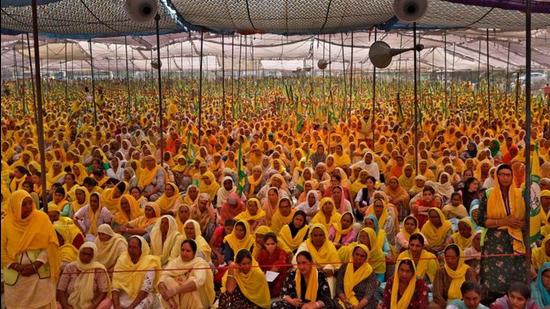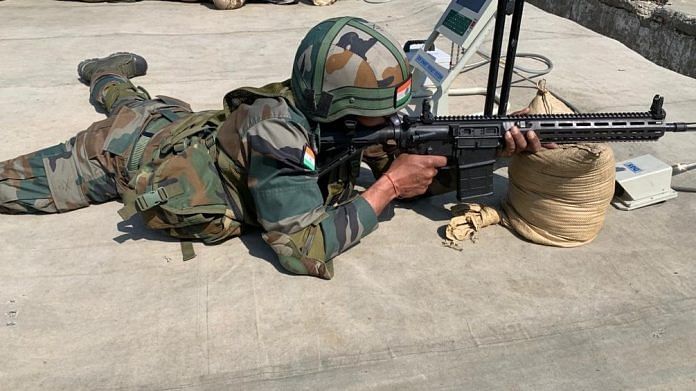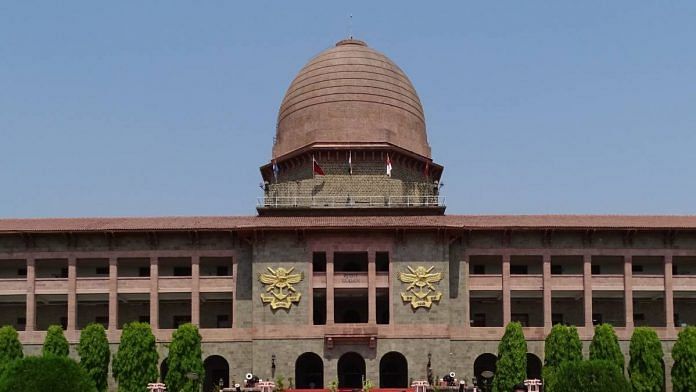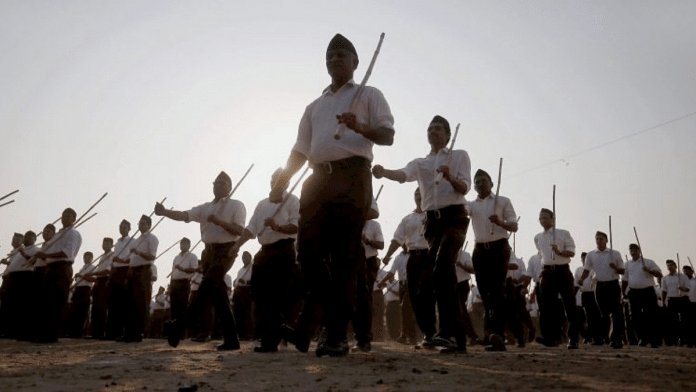Strike to start from 6 am and will continue till 6 pm
Women from Punjab and Haryana participate in farmers’ protest against the Centre’s new farm laws, at Tikri Border in Delhi. PTI file
New Delhi, March 17
Ahead of their Sampurna Bharat Bandh on March 26, farmer leaders on Wednesday said they were preparing to intensify the agitation against the three farm laws.
During the nationwide strike on March 26 that also marks four months of the farmers’ movement, all shops and other business establishments will remain shut for 12 hours, followed by the burning of the copies of the three laws during “holika dehan” on March 28.
“The strike will start from 6 in the morning and will continue till 6 in the evening, during which all shops and dairies and everything will remain closed.
“We will burn the copies of the three laws during Holi and hope that better sense prevails within the government, and it repeals the laws, and gives us a written guarantee for MSP,” said Ranjit Raju of Ganganagar Kisan Samiti addressing a press conference.
The bandh has found support in all trade and transport unions, students’, youth and women’s unions.
“We are also trying to create such meetings at the state level so that the strike is observed everywhere,” said another farmer leader Purushottam Sharma.
All India Kisan Sabha (AIKS) leader Krishna Prasad said the fact that the movement had managed to continue for as long as 112 days was an achievement in itself, and it would only get stronger from now.
He added that the Bharat Bandh will happen at “state, zila, tehsil and village levels”.
“The protest has been going on for 112 days. That itself is an achievement. Neither you, nor us had thought that we could do this, and the public has shown that it supports us,” he said.
Prasad also expressed concerns over the central government’s move to introduce the Electricity Amendment Bill 2021, claiming that any amendments made to the act would be in violation of the government’s commitment made to the farmers in January.
“During the 11 rounds of talks that we have had with the government, Agriculture Minister Narendra Tomar said that they accepted our demands over the electricity bill.
“The media wrote that 50 per cent demands of the farmers’ movement were resolved. But, now they are trying to introduce the act again. This is cheating,” he said.
Enacted in September, the three farm laws have been projected by the Centre as major reforms in the agriculture sector that will remove the middlemen and allow farmers to sell their produce anywhere in the country.
The protesting farmers, on the other hand, have expressed apprehension that the new laws would pave the way for eliminating the safety cushion of the Minimum Support Price (MSP) and do away with the “mandi” (wholesale market) system, leaving them at the mercy of big corporates. PTI























































































































